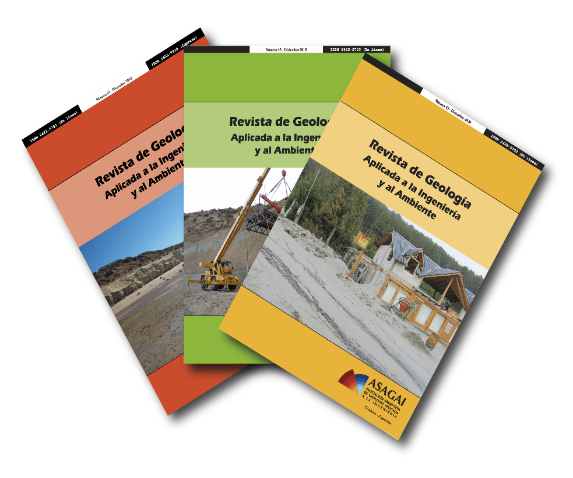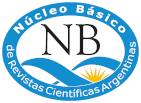Concepts, usefulness, myths and realities of earthquake hazard alarms and forecasts, from the perspective of risk management in Costa Rica
DOI:
https://doi.org/10.59069/agcjka16Keywords:
Earthquake alarm, Seismic early warning, Earthquake forecasting, Seismic prediction, Disaster risk management, Social communication of riskAbstract
Risk materializes periodically, near cities and infrastructure through destructive socioeconomic impacts hindering development in Costa Rica, located at a very active and complex tectonic region. Frequent and intense seismic activity has occurred for tens of millions of years and will not stop in the future. Risk, derived from seismicity depends on both earthquake hazard features (magnitude, hypocentral depth, rupture mechanism, strong motion, wave propagation during the events, geomechanical site conditions, local effects, topography), and the vulnerability of exposed elements (population, urban areas, economy). For this reason, compliance with earthquake-resistant design codes and territorial planning must be enforced. These measures have been successful, such as when adobe was banned as building material thus radically reducing vulnerability of houses. The question "Will a major event happen?" is futile because there is no doubt that it will. Engaging in uncertain forecasts and abusing on the frequency of delivering incomplete information to the public induce stress, uncertainty, and affect socioeconomic activity. In Costa Rica, seismic alarms will not give reaction time more than 10 seconds for shallow focus local earthquakes, and 10 to a maximum of 30 seconds for major subduction events. Alarms might create feelings of security without robust basis by making believe that risk has been solved, and paradoxically increasing vulnerability. An excess of alarms of non-destructive tremors, and "false alarms", will cause a loss of credibility and deteriorate response to actual destructive events. Seismic forecasts and alarms, under such circumstances, are luxuries whose technological, scientific, and financial basis should not compete against more urgent priorities for risk management.
References
Allen, R., Melgar, D. (2019) -Earthquake Early Warning: Advances, Scientific Challenges, and Societal Needs Annu. Rev. Earth Planet. Sci. 2019. 47,361–388. https://doi.org/10.1146/annurev-earth-053018-060457
Alvarado, G. (2023). Terremoto pronosticado de Nicoya: Fundamentos científicos, incertidumbres, consecuencias y recomendaciones. Instituto Costarricense de Electricidad. Red Sismológica Nacional. Universidad de Costa Rica. Comisión Nacional de Prevención del Riesgo y Atención de Emergencias. Informe inédito
Arroyo, M. (2023). Riesgo sísmico ante terremotos potencialmente perjudiciales en la Gran Área Metropolitana de Costa Rica (GAM). Revista Geológica de América Central (69), 1–33. https://doi.org/10.15517/rgac.2023.54878
Bunge, M. (2014). Pseudociencias: ¡Vaya timo!. Editorial Laetoli. Colección Biblioteca Bunge. Pamplo-na, España. ISBN: 9788492422708. https://www.marcialpons.es/libros/las-pseudociencias/9788492422708/
Cambridge Dictionary (s.f.). Dictionary. http://dictionary.cambridge.org/
CAPRA-ROBOT (s.f.). Análisis probabilístico del riesgo derivado de las amenazas geológicas y de la vulnerabilidad asociada. https://ingeniar-risk.com/servicios/software/modulos-del-capra-robot/
Cardona, O.D., Marulanda, M.C., Marulanda, P.M., Bernal, G.A., Carreño, M.L., Villegas, C.P., Molina, J.F., Herrera, S.A., Rincón, D.F., Grajales, S., Gonzalez, D., Maskrey, A. (2023a). Measuring Infrastructure Disaster Risk Resilience at the Global Level, Background Report, INGENIAR: Risk Intelli-gence for the
CDRI Flagship Report. https://doi.org/10.13140/RG.2.2.27937.58726
Cardona, O.D., Bernal, G.A., Villegas, C.P., Molina, J.F., Herrera, S.A., Marulanda, M.C., Rincón, D.F., Grajales, S., Marulanda, P.M., Gonzalez, D., Maskrey, A. (2023b). Multi-hazard Disaster Risk Model of Infrastructure and Buildings at the Global Level. Background Report, INGENIAR: Risk Intelli-gence for the CDRI Flagship Report. https://doi.org/10.13140/rg.2.2.11160.37124
Carvajal, A., Ito, T., Protti, M., Kimura, H. (2019). Earthquake potential in Costa Rica using three scenarios for the Central Costa Rica Deformed Belt as western boundary of the Panama Microplate. Journal of South American Earth Sciences (97), 30-41. https://doi.org/10.1016/j.jsames.2019.102375
Carranza, M. (2017). Sistema de alerta sísmica temprana para el sur de la Península Ibérica: determinación de los parámetros. (Tesis doctoral, Universidad Complutense de Madrid, Departamento de Física de la Tierra, Astronomía y Astrofísica). https://docta.ucm.es/entities/publication/11ccf7e3-ce96-4421-8143-40aa50122dd2
City of Los Angeles (LADBS) (s.f.). Mandatory Retrofit Programs. https://www.ladbs.org/services/core-services/plan-check-permit/plan-check-permit-special-assistance/mandatory-retrofit-programs?os=..&ref=app
Climent, A., Rojas, W., Alvarado, G., Benito, B. (2008). Evaluación de la amenaza sísmica en Costa Ri-ca. Proyecto RESIS II. Norwegian Seismic Array (NORSAR); Red Sismológica Nacional; Escuela Centroamericana de Geología; Instituto Costarricense de Electricidad. https://rsn.ucr.ac.cr/images/Biblioteca/Informes_sismos/amenaza_sismica_cr.pdf
Coalition for Disaster Resilient Infrastructure (CDRI). (s.f. a). Multi-hazard Risk Country Profile, Cos-ta Rica. https://giri.unepgrid.ch/facts-figures/multi-hazards
Coalition for Disaster Resilient Infrastructure (CDRI). (s.f. b). Earthquake hazard Risk Country Pro-file, Costa Rica. https://giri.unepgrid.ch/facts-figures/earthquake
Colegio Federado de Ingenieros y Arquitectos de Costa Rica. (2011). Código Sísmico de Costa Rica. 4a. ed. Editorial Tecnológica de Costa Rica, Cartago. https://isbn.cloud/9789977663630/codigo-sismico-de-costa-rica-2010/
Comisión Asesora Permanente Régimen de Construcción Sismorresistente de Colombia. (2010). Reglamento Colombiano de Construcción Sismorresistente NSR-10. https://www.confinedmasonry.org/wp-content/uploads/2018/11/Colombia-NSR-10-reglamento_construccion_sismo_resistente.pdf
Comité Técnico Guía Boliviana de Diseño Sísmico. (2020). Guía Boliviana Diseño Sísmico. Ministerio de Obras Públicas. Servicios, Vivienda. https://es.slideshare.net/TheJamez/gbds-2020-bolivia
Decreto N°. 10. de 1910 (Municipalidad de Cartago, Cartera de Gobernación). Reglamento de construcciones urbanas. 29 agosto de 1910. https://www.codigosismico.or.cr/descargas/decreto1910cartago.pdf
Dirección General de Políticas y Regulación del Perú. Construcción y Saneamiento. Diseño Sismorresistente. (2019). Resolución Ministerial No. 043-2019 Vivienda. https://cdn.www.gob.pe/uploads/document/file/2366641/51%20E.030%20DISE%C3%91O%20SISMORRESISTENTE%20RM-043-2019-VIVIENDA.pdf
Dixon, T., Schwartz, S., Protti, M., González, V., Newman, A., Marshall, J., Spotila, J. (2013). Detailed Data Available for Recent Costa Rica Earthquake. EOS. Transactions American Geophysical Union. (94), Issue 2. 17–18. https://agupubs.onlinelibrary.wiley.com/doi/10.1002/2013EO020001
Dixon, T., Jiamg, Y., Malseversi, R., McCaffrey, N., Voss, M., Protti, M., Gonzalez, V. (2014). Earthquake and tsunami forecasts: Relation of slow slip events to subsequent earthquake rupture. Proceedings National Academy of Sciences (111). 48-70. www.pnas.org/cgi/doi/10.1073/pnas.1412299111
ERN-INGENIAR-CAPRA, 2015. Análisis del riesgo sísmico en San José. Informe técnico ERN-CAPRA-T27. Tomo II. https://ecapra.org/sites/default/files/documents/ERN-CAPRA-R5-T2.7%20-%20Terremoto%20San%20Jos%C3%A9_COR.pdf
Feng, L., Newman, A., Protti, M., González, V., Jiang, Y., Dixon, T. (2012), Active deformation near Nicoya Peninsula, NW Costa Rica, 1996-2010: Interseismic megathrust coupling. Journal of Geophysical Research. Solid Earth. (117) B6. https://agupubs.onlinelibrary.wiley.com/doi/full/10.1029/2012JB009230
Geller, R. (2017). Seismology: Japan must admit it can't predict quakes. Nature (545). 289. https://doi.org/10.1038/545289c
Global Earthquake Model (GEM). (s.f.). Costa Rica Risk Profile. https://github.com/gem/risk-profiles/tree/master/Caribbean_Central_America/Costa_Rica
Hobbs, T., Newman, A., Protti, M. (2019). Enigmatic upper-plate sliver transport paused by megathrust earthquake and after-slip. Earth and Planetary Science Letters (520). 87-93.
Houg, S. (2007). Richter's Scale. Measure of an Earthquake, Measure of a Man. Princeton University Press (144) 6. ISBN 9780 691 12807 8. https://pubs.geoscienceworld.org/geolmag/article-abstract/144/6/1027/138555/hough-s-e-2007-richter-s-scale-measure-of-an
Instituto Nacional de Normalización de Chile. (2019). Diseño sísmico de edificios. Norma Oficial NCh 2369. 51pp. https://www.bcn.cl/catalogo/client/es_CL/publico/search/detailnonmodal/ent:$002f$002fSD_ILS$002f0$002fSD_ILS:233692/ada?qu=&nov=1
Jiang, Y., Wdowinski, S., Dixon, T., Hackl, M., Protti, M., Gonzalez, V. (2012). Slow slip events in Costa Rica detected by continuous GPS observations: 2002–2011. Geochemistry, Geophysics, Geosys-tems. (13) Q04006. https://agupubs.onlinelibrary.wiley.com/doi/pdf/10.1029/2012GC004058.
Jiang, Y., Liu, Z., Davis, E., Schwartz, S., Dixon, T., Voss, N., Malservisi, R., Protti, M. (2017). Strain re-lease at the trench during shallow slow slip: The example of Nicoya Peninsula, Costa Rica, Geo-physical Research Letters (44). https://doi.org/10.1029/2012GC004058
Laporte, M; Miranda, P; Montero, W; Mora, S; Morales, L; Santana, G; Soto, G. (2023). Anticipaciones, pronósticos y predicciones sismológicas: El caso de la región de Osa, Costa Rica. Delfino. Teclado Abierto. https://delfino.cr/2023/06/de-anticipaciones-pronosticos-y-predicciones-sismologicas-el-caso-de-la-region-de-osa-costa-rica
Lay, Y., Schwartz,S., Rivera, L., Protti, M. (2013). The 5 September 2012 Nicoya, Costa Rica Mw 7.6 earthquake rupture process from joint inversion of high-rate GPS, strong-motion, and teleseismic P wave data and its relationship to adjacent plate boundary interface properties. Journal of Geo-physical Research. Solid Earth (118). 10. 5453-5466. https://doi.org/10.1002/jgrb.50379
Malservisi, R., Schwartz, S., Voss, N., Protti, M., González, V., Dixon, T., Jiang, Y., Newman, A., Richardson, A., Walter, J. (2015). Multiscale postseismic behavior on a megathrust: The 2012 Nicoya earthquake, Costa Rica. Geochemistry, Geophysics, Geosystems (16). 6. 1848-1864. https://doi.org/10.1002/2015GC005794
Mena, M. (2023). ¿Sismo de magnitud 10,4? OVSICORI explica error y descarta ese potencial en Costa Rica. El Observador. https://observador.cr/sismo-de-magnitud-10-4-ovsicori-explica-error-y-descarta-ese-potencial-en-costa-rica/
Miranda, P. (2019). Historia del Código Sísmico de Costa Rica. SismoCon. Comisión del Código Sísmico de Costa Rica. Universidad Fidelitas. Informe inédito.
Merriam-Webster. (s.f.). Dictionary. Recuperado el 24 de mayo de 2024. https://www.merriam-webster.com/dictionary/
Montero P., W. (1986). Períodos de recurrencia y tipos de secuencias sísmicas de los temblores interplaca e intraplaca en Costa Rica. Revista geológica de América Central. (5). 35-72. https://doi.org/10.15517/rgac.v0i05.12267
Montero, W; Camacho, E; Climent, A; Espinoza, A; Boschini, I. (1994). Sismicidad y marco neotectónico de Costa Rica y Panamá. Revista Geológica de América Central. Número especial, terremoto de Limón de 1991. https://doi.org/10.15517/rgac.v0i0.13424
Mora, S; Saborío, J; Asté, J; Prepetit, C ; Joseph, V ; Matera, M. (2012). Slope instability hazard in Haiti: Emergency assessment for a safe reconstruction. Banff, Alberta, Canada. Keynote speech. Landslides and Engineered Slopes: Protecting Society through Improved Understanding. Eberhardt et al. (eds) © 2012 Taylor & Francis Group, London, ISBN 978-0-415-62123-6; https://www.researchgate.net/publication/275961636
Mora, S. (2021). La Geodinámica externa: Aspectos geomecánicos, hidrogeológicos, climáticos y del riesgo. Bejerman, N.; Pérez, M.; Bunicontro, M. (Eds.). 1a ed. Córdoba, Argentina. Editorial ASA-GAI, 2022. Libro digital PDF. ISBN 978-987-21766-8-6. https://asagai.org.ar/la-geodinamica-externa-aspectos-geomecanicos-hidrogeologicos-climaticos-y-del-riesgo/ ; https://www.amazon.com/gp/product/B0B728KLNN/ref=as_li_tl?ie=UTF8&creativeASIN=B0B728KLNN&linkCode=as2
Morales, L; 1994. Daños causados por el Terremoto de Limón: pérdidas y medidas de mitigación. Revista Geológica de América Central. Número especial, Terremoto de Limón de 1991. https://doi.org/10.15517/rgac.v0i0.13455
Muñoz, A. 2023. Terremotos, fenómeno devastador que la ciencia aún no es capaz de anticipar. Portal de Investigación. Vicerrectoría de Investigación. Heraldo; Tercer Milenio. https://www.heraldo.es/noticias/sociedad/2023/02/28/terremotos-fenomeno-devastador-ciencia-no-capaz-anticipar-1633689.html
National Earthquake Prediction Evaluation Council-NEPEC. (s.f.). National Earthquake Hazard Reduction Program (NEHRP). U. S. Dept. of the Interior. U.S. Geological Survey. https://www.usgs.gov/programs/earthquake-hazards/national-earthquake-prediction-evaluation-council-nepec
Nishenko, S. (1989). Circum-pacific seismic potential 1989-1999. U.S. Dept. of the Interior. Geological Survey, NEIC. Open File Report. 86-189. https://doi.org/10.1007/BF00880240
Nishenko, S. (1991). Circum-Pacific seismic potential, 1989-1999. Pure Applied Geophysics. (135) 169-259. https://doi.org/10.3133/ofr8986
Observatorio Vulcanológico y Sismológico de Costa Rica (OVSICORI). (2023). ¿Sismo de magnitud 10,4? OVSICORI explica el error y descarta ese potencial en Costa Rica. (Video). https://www.youtube.com/watch?v=ePFUjYmuUoM
Orden XI. No. 492-A de 1841. (Departamento de Gobernación de Costa Rica). Instrucción sobre construcción de edificios para edificar con firmeza. Orden del Gobierno con motivo de la ruina que causó el terremoto del 2 de setiembre del presente año. http://www.ovsicori.una.ac.cr/sistemas/biblioteca/ovsicori/Riesgos/Riesgo%20Sismico%20en%20Cartago/doc1080-8a.pdf
Protti, M., Güendel, F., Malavassi, E. (1991). Evaluación del potencial sísmico de la península de Nicoya. Universidad Nacional, Heredia. EFUNA. 1ª. Edición. https://isbn.cloud/9789968140867/evaluacion-del-potencial-sismico-de-la-peninsula-de-nicoya/
Protti, M., González, V., Newman, A., Dixon, T., Schwartz, S., Marshall, J., Feng, L., Walter, J., Malservisi, R., Owen, S. (2014). Nicoya earthquake rupture anticipated by geodetic measurement of the locked plate interface. Nature Geoscience (7). 117–121. https://doi.org/10.1038/ngeo2038
Protti, M., Bangs, N., Baumgartner, P., Fisher, D., Kaneda, Y., LaFemina, P., Newman, A., Noren, A., Schwartz, S., Suyehiro, K. (2016). Osa Peninsula, Costa Rica: A unique opportunity for inland drilling and instrumenting of seismogenic zone of large megathrust earthquakes. White Paper. Subduction Zone Observatory Workshop. Boise, Idaho. https://www.researchgate.net/publication/368102225_Osa_Peninsula_Costa_Rica_A_unique_opportunity_to_drill_and_instrument_the_seismogenic_zone_of_large_megathrust_earthquakes
Real Academia Española (RAE). (s.f.). Diccionario de la lengua española. Recuperado el 22 de mayo de 2024 de https://dle.rae.es/cultura?m=form
Saad, O., Chen, Y., Savvaidis, A., Fomel, S., Jiang, X., Huang, D., Oboué, Y., Yong, S., Wand, X., Zhang, X., Chen, Y. (2023). Earthquake Forecasting Using Big Data and Artificial Intelligence: A 30‐Week Real‐Time Case Study in China. Bull. Seismological Society of America. (113). 6. 2461–2478. https://doi.org/10.1785/0120230031
Saegusa, A. (1999). Japan to try to understand quakes, not predict them. Nature. (97). 284. https://doi.org/10.1038/16758
Sendai Framework Terminology. (2015). Disaster Risk Reduction. https://www.undrr.org/terminology/disaster-risk-management
Silva, V., Taherian, A., Sousa, C.(2023). Earthquake early warning for Portugal: part 2 – where is it beneficial? Bulletin of Earthquake Engineering. https://doi.org/10.1007/s10518-023-01715-w
Thorsberg, C. (2024). Could A.I. Help Seismologists Predict Major Earthquakes? Smithsonian Magazine. https://www.smithsonianmag.com/smart-news/ai-help-seismologists-predict-major-earthquakes-180983519/
United Nations Office for Disaster Risk Reduction-UNDRR. (s.f.). Glossary. https://www.undrr.org/drr-glossary
United Nations Disaster Risk Reduction-UNDRR. (s.f.). Inclusive early warning action: Checklist and implementation. https://www.undrr.org/publication/inclusive-early-warning-early-action-checklist-and-implementation-guide
United Nations Office for Disaster Risk Reduction-UNDRR. (s.f.). Early warning systems and early action in fragile, conflict, and violent contexts: Addressing growing climate & disaster risks. Centre for Excellence. Climate and disaster Resilience. https://www.undrr.org/publication/early-warning-systems-and-early-action-fragile-conflict-and-violent-contexts-addressing
United Nations Office for Education and Science-UNESCO. (2010). Glossary of basic terminology on disaster risk reduction. https://unesdoc.unesco.org/ark:/48223/pf0000225784
Uyeda, S; 2013. On Earthquake Prediction in Japan. Proceedings. Japan Academy. Series B (89).9. http://dx.doi.org/10.2183/pjab.89.391
Voss, N., Malservisi, R., Dixon, H., Protti, M. (2017). Slow slip events in the early part of the earthquake cycle. Journal of Geophysical Research. Solid Earth (122). 8. 6773-6786. https://doi.org/10.1002/2016JB013741
Voss, N., Dixon, H., Liu, Z., Malservisi, R., Protti, M. (2018). Do slow slip events trigger large and great megathrust earthquakes? Science Advances (4). 10. https://www.science.org/doi/10.1126/sciadv.aat8472
Walter, J., Schwartz, S., Protti, M., Gonzalez, V. (2013). Synchronous occurrence of shallow tremor and very low frequency earthquakes offshore of the Nicoya Peninsula, Costa Rica. Geophysical Re-search
Letters. 40(8), 1517-1522. https://doi.org/10.1002/grl.50213
Walter, J., X. Meng, Z., Peng, S., Schwartz, A., Newman, V., Protti, M. (2015). Far-field triggering of foreshocks near the nucleation zone of the 5 September 2012 (Mw 7.6) Nicoya Peninsula, Costa Rica earthquake. Earth and Planetary Science Letters 431, 75–86. https://doi.org/10.1016/j.epsl.2015.09.017
Wikipedia. (s.f.). Lists of 21st-century earthquakes. https://en.wikipedia.org/wiki/Lists_of_21st-century_earthquakes
Word Reference (s.f.). Glossary. Versión en español. Recuperado el 18 de mayo de 2024. https://www.wordreference.com/definicion/pron%C3%B3stico
World Health Organization.(s.f.). Glossary of Health Emergency and Disaster Risk Management Terminology https://www.who.int/publications/i/item/9789240003699
Xie, S., Dixon, T., Malservisi, R., Jiang, Y., Protti, M., Muller, C. (2020). Slow slip and Inter-transient lock-ing on the Nicoya megathrust in the late and early stages of an earthquake cycle. Journal of Geo-physical Research. Solid Earth (125). 11. https://doi.org/10.1029/2020JB020503.
Yao, D., Walter, J., Meng, X., Hobbs, T., Peng, Z., Newman, A., Schwartz, S., Protti, M. (2017), Detailed spatiotemporal evolution of microseismicity and repeating earthquakes following the 2012 Nicoya earthquake. Journal of Geophysical Research. Solid Earth. (122) 1 524–542. https://doi.org/10.1002/2016JB013632
Downloads
Published
Issue
Section
License
Copyright (c) 2024 Sergio Mora Castro, Gerardo Javier Soto Bonilla, Guillermo Santana, María Laporte Pirie, Pio Miranda Jenkins

This work is licensed under a Creative Commons Attribution-NonCommercial-ShareAlike 4.0 International License.
Attribution - Non-Commercial - Share Alike (by-nc-sa): No commercial use of the original work or any derivative works is permitted, distribution of which must be under a license equal to that governing the original work.










